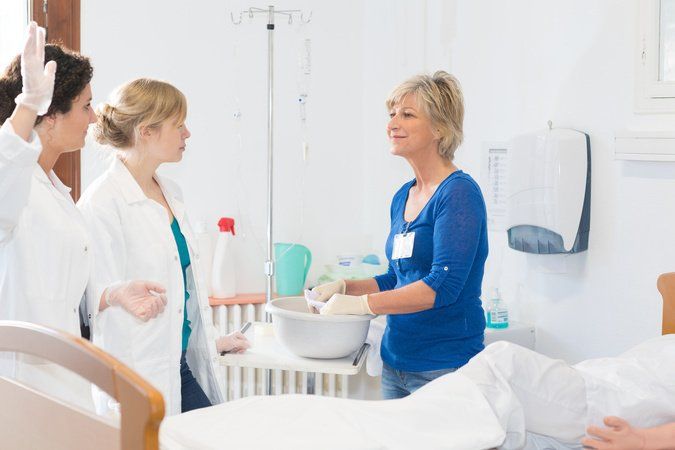Blog

It’s that time of year again when nurses (Registered or Enrolled) and Midwives are due to pay their AHPRA registration and ensure they have totaled up enough CPD hours to retain registration. But what happens if you are yet to achieve enough professional development hours? This post will explore the exciting learning opportunities available specifically to Queensland nurses in 2021 to prevent a last-minute hours scramble in the future. 1.Queensland Nurses and Midwives Union (QNMU) Are you part of the 62,000 strong QNMU community? This state-registered union is a branch of the Australian Nursing and Midwifery Council that seeks to promote and defend the industrial, professional, social, political, and democratic interests of its members. Registered Nurses / Midwives who work over 24 hours a week will pay $710.40 and those working a little less will pay around $534.00. For a full price breakdown, click here . Though it may seem pricey, the benefits and incredible CPD opportunities available to you, both in person and virtually are well worth the price tag. To sign up for any upcoming CPD events you must login to the member portal here first. 2. ECT4Health Are you interested in learning the science behind your nursing practice through evidence-based education? Well, ECT4Health is well worth a Google. Rob, the brains behind this dedicated company, has been working as a lecturer and nurse educator for public and private providers since 2000. He started ECT4Health in 2014 after resigning from his full-time position at Qld Health due to overwhelming demand from his students and clients. Since this time ECT4Health has delivered over 260 seminars and workshops, whilst organising over 7 CPD cruising holidays with groups of Nurses and Paramedics - now that’s what I’m talking about! Each CPD course can be purchased separately and does not require a membership. They offer seminars and workshops , online learning opportunities and also tax deductible holidays where you can learn while lazing by the pool! 3. Ausmed You’ve probably heard of Ausmed before as it’s a popular app health professionals use to track their CPD hours, but did you know they also offer a magnitude of online courses and face-to-face workshops and conferences? Specifically, Ausmed has a number of exciting courses and CPD opportunities happening in Queensland this year. Click this link to explore and get yourself signed up. One in particular I wanted to mention is the Brisbane Nurses Conference happening on May 27-28, 2021. For more information, click here. 4. Queensland Government Though looking to the government for CPD opportunities may not be your first thought, they appear dedicated to the growth and development of nurses and Midwives in Queensland. They have partnered with the Cunningham Center to offer a range of educational and training activities designed for both Queensland Health and external clients. They offer courses in immunisation, allied health professional enhancement, clinical assessor workshops, and telehealth plus many more. For their full range of courses click here . Other continued professional development platforms; ● Health Workforce Queensland. ○ Specially targeted to remote and rural general practitioners and nurses. Click here to read about their professional development workshops. ● Australian Healthcare Academy (AHA) ○ A Registered Training Organisation that delivers accredited and non-accredited training and assessment throughout Australia. Located in Sydney, they offer a range of thoughtfully constructed online courses if travel is challenging. See their courses here . ● Australian College of Nursing ○ They offer a huge range of nursing educational opportunities which you can view here , including their popular vaccinations course. ● NPS Medicinewise ○ An independent, evidence-based, not-for-profit organisation aimed at supporting quality use of medicines to improve health decisions and health and economic outcomes in Australia. They offer a vast range of informative CPD opportunities including medication safety training, type two diabetes, asthma, and immunisations. See the full list h ere . In summary, Carestaff Nursing Services wants to help you avoid feeling stressed and overwhelmed come registration renewal time. They want to see you enjoy educational opportunities throughout the year rather than being forced to take a course you are not really interested in but have signed up for due to convenience and time pressure. Take a look at the above courses/ groups and sign up for a couple that spark interest - remember they are tax-deductible (just like your AHPRA registration due May 31st), as they are directly related to your field of work! Best of luck. Emma Smith Registered Nurse

Are you finding it difficult to know exactly what is considered a valid Continuing Professional Development (CPD) activity that can contribute to your necessary required hours? The Nursing and Midwifery Board of Australia (NMBA) don’t really specify “approved” or “accredited” courses, leaving the relevancy decision up to us. But this can be a confusing minefield! To make it easier, we’ve listed 10 ways you may not have considered in which you can successfully contribute to your CPD hours. 1. Complete all your mandatory competencies (plus a few extras) Fire training, basic life support, hand hygiene, and manual handling are just a few of the mandatory competencies I’m sure you are all too familiar with. Well, these mandatory competencies can be counted towards your CPD if they consist of new learning. While you are busy completing these usual annual competencies don’t forget to also complete your BloodSafe packages as these can also contribute to your CPD. This link here explains how many CPD hours are associated with each BloodSafe training module, which is super helpful. 2. Attend as many in-service education sessions as you can and even volunteer to give a talk yourself Inservice education is generally offered to staff on the morning shift during double time by the education team and is a fantastic opportunity to learn something new whilst also contributing to your CPD hours. Though it may be daunting, consider presenting an education session yourself on a topic of interest. It not only looks great on your resume but also highlights you as a leader of that particular area, opening opportunities for future learning and mentoring. 3. Volunteer to participate in clinical auditing such as hand hygiene compliance Have you ever completed a clinical audit or been part of the critical incident monitoring and case review team? Surrounding yourself with others who are passionate about improving compliance and minimising errors to improve patient care, makes for an encouraging and exciting workplace to be in. Consider approaching your manager or education team to see what opportunities are available as these activities can all be counted towards your CPD too. 4. Become a mentor or preceptor Have you ever assisted or helped orientate a new staff member to your ward/unit? This counts towards your CPD if documented appropriately, as noted on the NMBA’s website here . The same can be said for becoming a mentor or preceptor. If you have taken an active role in helping to guide and teach another member of staff new skills, behaviours, and learnings (again, when documented appropriately), this can contribute to your CPD. 5. Reading journal articles or textbooks Keep up to date with new developments and changes within the healthcare industry by reading journals like the Medical Journal of Australia (MJA) and the Australian Journal of Advanced Nursing . Simply by reading, then recording and reflecting on what you’ve learned, can contribute to your overcall CPD. If you’re not sure whether the article or text “counts” consider if the author is reputable and also make sure it directly links back to your practice as a nurse and/or midwife. For the midwives among us, The Royal Australian and New Zealand College of Obstetricians and Gynaecologists (RANZCOG) released an updated Intrapartum Fetal Surveillance Clinical Guideline as of January 2020. Reading this document certainly counts towards your CPD hours. 6. Join a committee or group responsible for furthering the education of fellow nurses and colleagues. Consider representing your unit/ward on a committee such as OH&S or a clinical speciality portfolio like manual handling. These advanced positions can significantly improve your own personal nursing practice by giving you a different perspective. They can also help further your leadership skills as you may be in charge of organising annual competencies and compliance. 7. Complete free and also paid online short courses Did you know you can contribute to your CPD from your lounge room? Through using online training websites such as Nurse CPD online , AusMed , Medcast , and also the ANMF , you can complete video learning packages, interactive zoom training modules, and also self-directed learning packages. Though most of these packages and training modules do require payment, there are also free courses available like this one via Nursing CPD Institute. 8. Attend a conference or study day Is there a topic or area of nursing/midwifery you’d like to know more about? Think wound care, advanced life support, or maybe pain management? Then why not apply for study leave and go learn more about it with a few of your nursing buddies? These days can not only contribute a significant amount towards your CPD hours, but they also provide excellent networking opportunities with other nurses who hold similar interests. The Third Trimester Ultrasound for Nurses and Midwives run by Ultrasoundlearning.com is a popular course for midwives wanting to sink their teeth into something. 9. Undertake postgraduate course units which are of relevance to your context of practice Are you currently studying a postgraduate course or are considering one in the future? This course work, if relevant to your area of nursing and / midwifery, can contribute to your CPD. My tip though is to have a robust system in place before you start studying to make documenting your CPD hours easy and not a chore before a big exam or assignment. 10. Reflecting on feedback by keeping a practice journal Do you keep a clinical practice journal directly relating to your work as a nurse and/or midwife? If not, it might be a good idea to start as it can contribute to your CPD hours. When receiving feedback it can be helpful to write it down as a reminder of what you’ve learned over a particular time period, rather than having it go in one ear and out the other! In summary, there are ample and exciting opportunities for us as nurses and midwives to complete our necessary CPD hours before it’s registration time again. Try to mix up the CPD activities you complete to keep the year interesting and give yourself something to look forward to. Cheers, Emma Smith Registered Nurse

